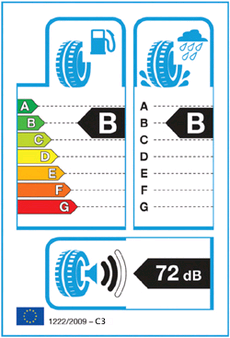New EU tire label

|
Why has the EU introduced a new tire label ?
What else should you consider when buying new tires ?
What tire types does the tire label apply to ?
Requirements at the point of sale, incl. online sales - A tire label in colors (provided by the tire manufacturer or tire importer) - Before purchasing, the dealers must inform the customer about the tire's test results. - The various test results must be included in all sales material. - When purchasing, retailers must state the test results on invoices to end users, or in an accompanying document. How to read the label ?
|
|
|
Rolling resistance (fuel economy)
|
|
|
Wet grip (braking properties)
|
|
|
Noise (external)
|

 UK Delivery
UK Delivery Pay later - Pay over time
Pay later - Pay over time Fast & Very Cheap to you
Fast & Very Cheap to you


















